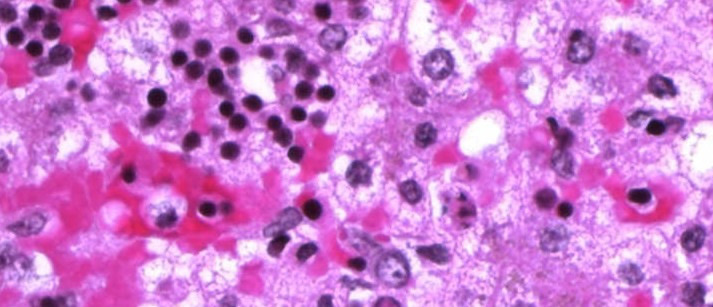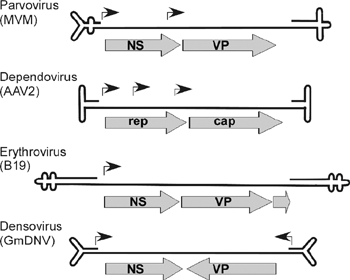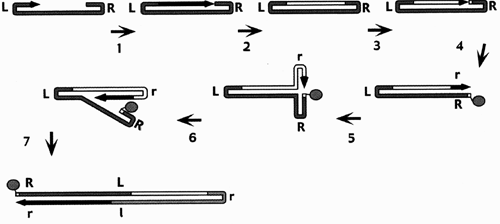Parvoviridae Properties

Type Species: Minute Virus of Mice
Genome: Single stranded, linear DNA, ~5 kb
Click to enlarge genomes:  (11)
(11)
Strandedness: Primarily negative strands in virion
Genes: Nonstructural (replication) and capsid
Presence of Envelope: None
Capsid: Icosahedral, T=1
Segments: Monopartite
Size: Very small (generally considered the smallest, physically, of the DNA viruses)
Kinetic classes: one
Capsid Proteins: VP1, VP2, VP3
Replication Strategy: Parvoviruses replicate in the nucleus and must wait until the cell is in S phase before reproducing themselves. The viruses utilize hairpin structures (using terminal palindromes) to replicate and solve the "tip problem." The genome folds back in on itself and self-primes to allow complementary strand synthesis (steps 1-4), a hairpin forms to allow for further DNA replication (5-6), and a dimer replicative intermediate is formed (7).
Cont. below

Next, a nuclease (NS1) cuts itself out and attaches to the 5' end. DNA synthesis continues until replication is complete. The new strand separates and becomes packaged in a capsid.
